The time has finally come! After years and years of waiting, the TWSBI Eco is upon us! We’ve been teased with designs, we’ve voted on its name, we’ve fantasized about its ultra affordable price. Is it all we’ve hoped for? Is it a game changer? Or will it crack and break like so many others before it? That’s what I hope to uncover in this review of the TWSBI Eco.
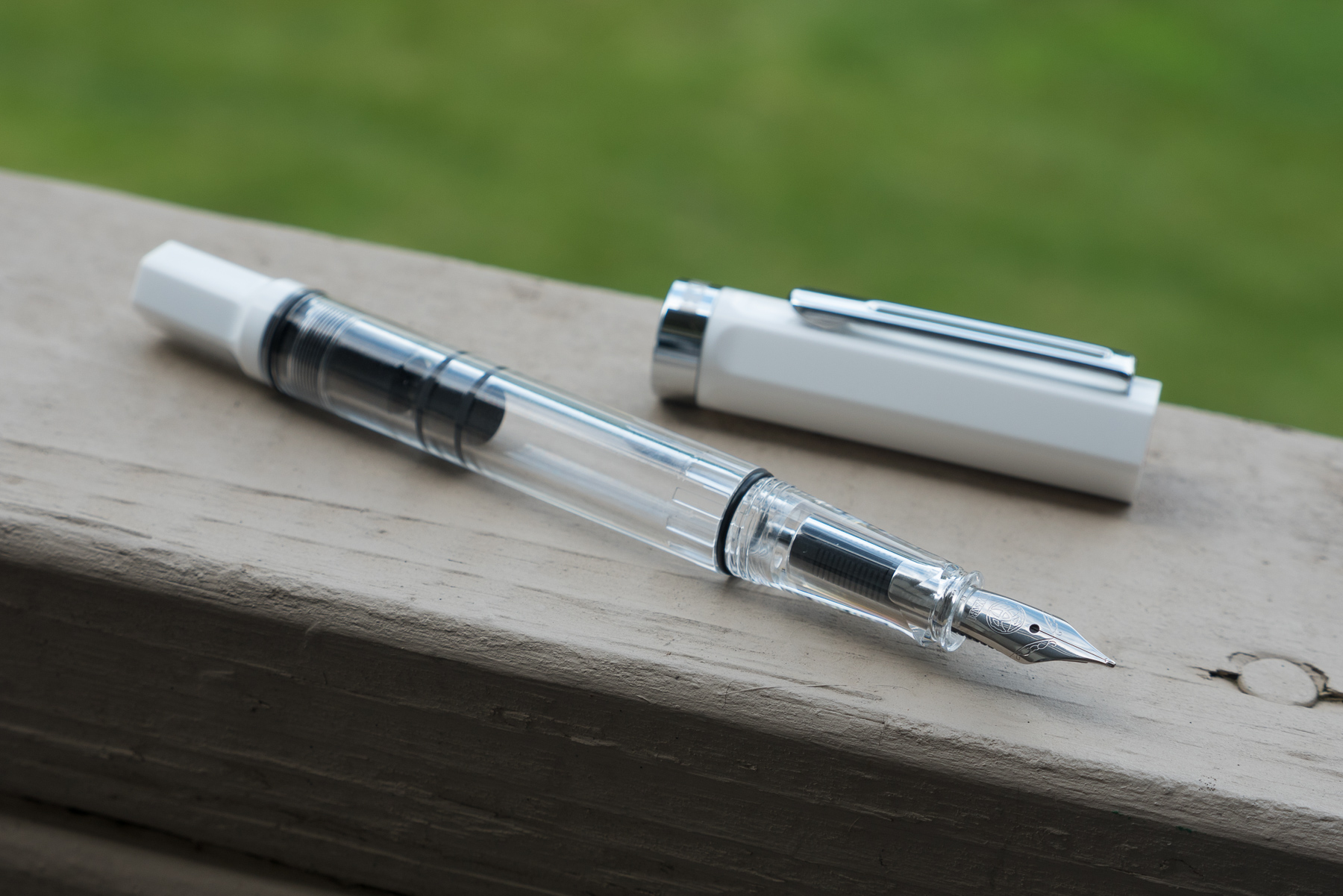
The Eco is the 6th model in TWSBI’s lineup available in two colors, white or black, and was designed with the intention of being as economical as possible. Currently, several models sell for $50, which is already a pretty affordable price point. Beating that price by any margin while maintaining any kind of quality would surely be a challenge.
TWSBI has released the Eco for an impressive $28.99 and, from what I can tell, have managed to create a quality pen in the process!
To achieve their goal, TWSBI has removed as much metal from the pen as possible and simplified their design. The only metal in the pen is the nib, the bap band, and clip. There’s no metal accent bands or collar for the piston unit, and if you count the cap assembly as one part, then there’s only 10 pieces to the entire pen with the major change being the section and barrel are now one solid piece!
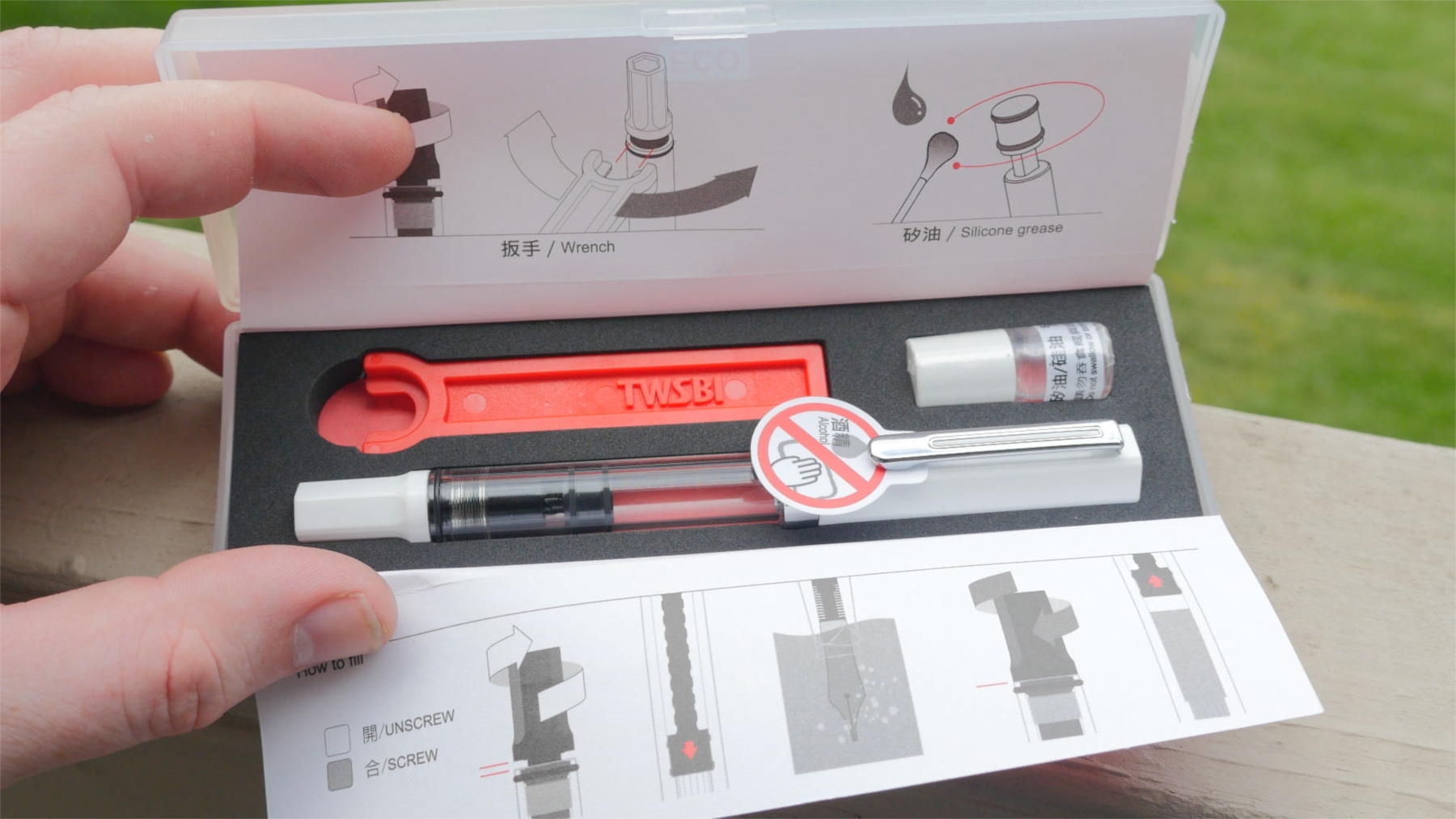
The packaging is very similar to what we’ve seen with previous pens, including lots of pictorial instructions, but the biggest difference is the piston wrench is now made from plastic instead of metal.
The pen itself looks and feels really good. The smooth round barrel is contrasted by a hexagonal cap and piston knob that gives the pen a unique aesthetic.
I’ve always been happy with the quality of pistons in TWSBI’s pens and the Eco doesn’t disappoint. It’s wonderfully smooth and kind of unexpected in a $30 pen.

At the front of the barrel you’ll find an o-ring just like you would on any other TWSBI, except the Micarta. The o-ring provides positive feedback that the cap is securely attached to the pen. The only downside is that it gives the pen (and others that use it) a bit of an unfinished, almost cheap look.
My view on this aspect has slowly changed as it never use to bother me, but I now notice the sight of o-rings are a bit of an annoyance. You can see another o-ring at the back of the barrel which is used to help the cap post, and while I think it’ll do a fine job for most situations, it’s not as secure as I’d like. I’ve never had it pop off during use, but with the pen in my regular grip it is possible for me to get the cap to pop off by rubbing it against my hand. Taking it a bit further, the cap can actually be shaken off. Now, unless you’re trying to write while sitting on a paint shaker, this’ll never be an issue, but I have pens with caps that post so securely that my two year old can’t remove it. This is not one of those pens.
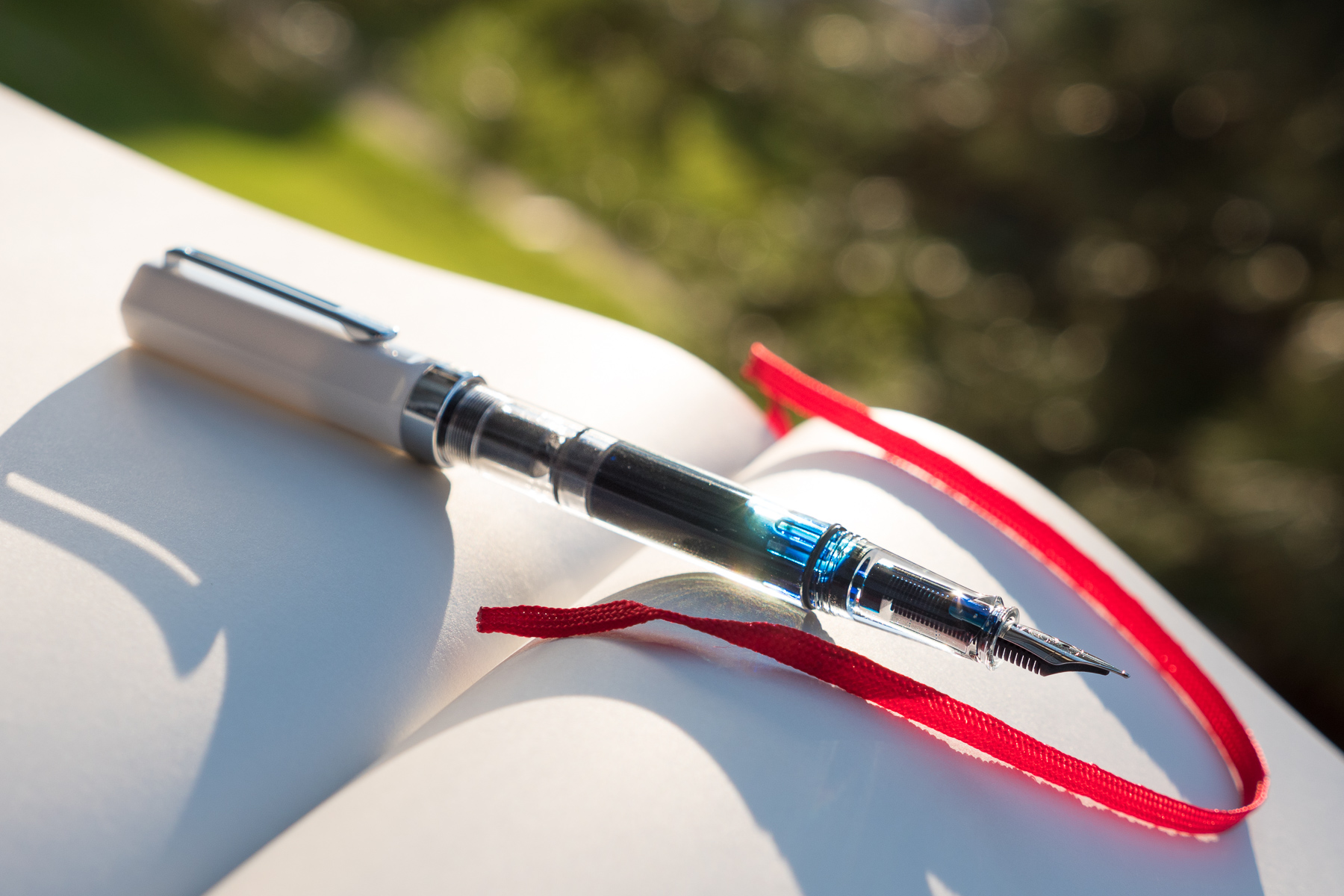
As mentioned previously, the section and barrel are now molded as one piece. Hopefully, this will eliminate many of the cracking issues that’s plagued TWSBI pens in the past. The #5 stainless steel nib is available in sizes EF, F, M, B, and 1.1 Stub.
Another improvement with this design is that it’s much easier to remove the nib and feed. Just pinch and pull! Seriously, that’s it! The feed has a little shelf molded into it so aligning the nib and feed is super simple. Then pinch the two together and shove it in the section. This will make cleaning and nib swapping so much easier. Thank you TWSBI!
Now let’s see how the Eco stacks up to all the other TWSBI pens.
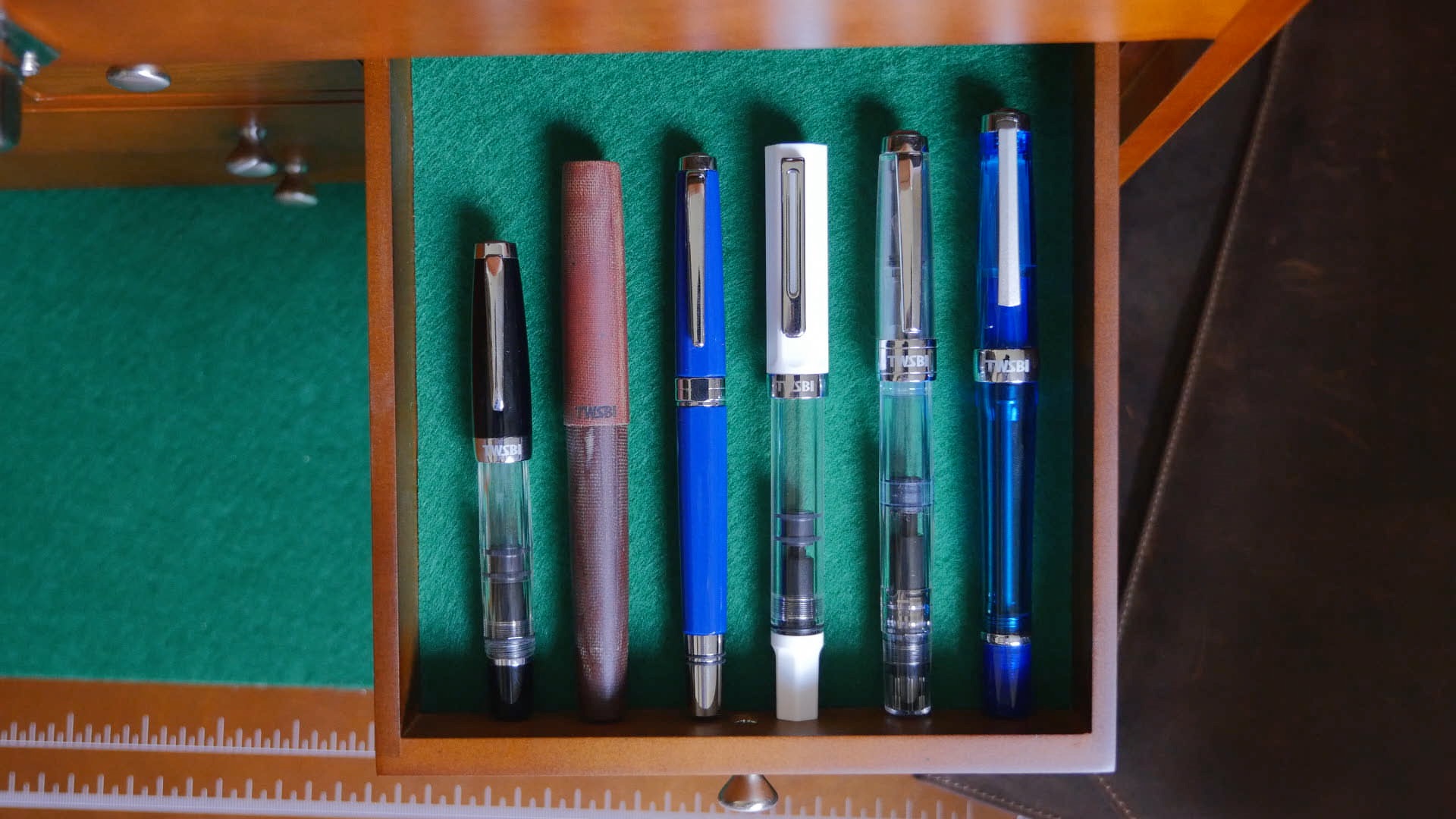
From left to right we have the Mini, the Micarta, the Classic, the Eco, the 540, and the Vac700. The Eco is a sizable pen and, because of its cap, has sort of a chunky profile. Removing the caps we can see that it’s just a hair longer the Diamond 500 series, which I’ve always found to be a well-sized, comfortable pen. And since the Mini will most likely be used posted, let’s see how it compares. One reason why the Mini is one of my favorite pens is because it’s short and compact when not in use, yet comfortable and very usable when posted.
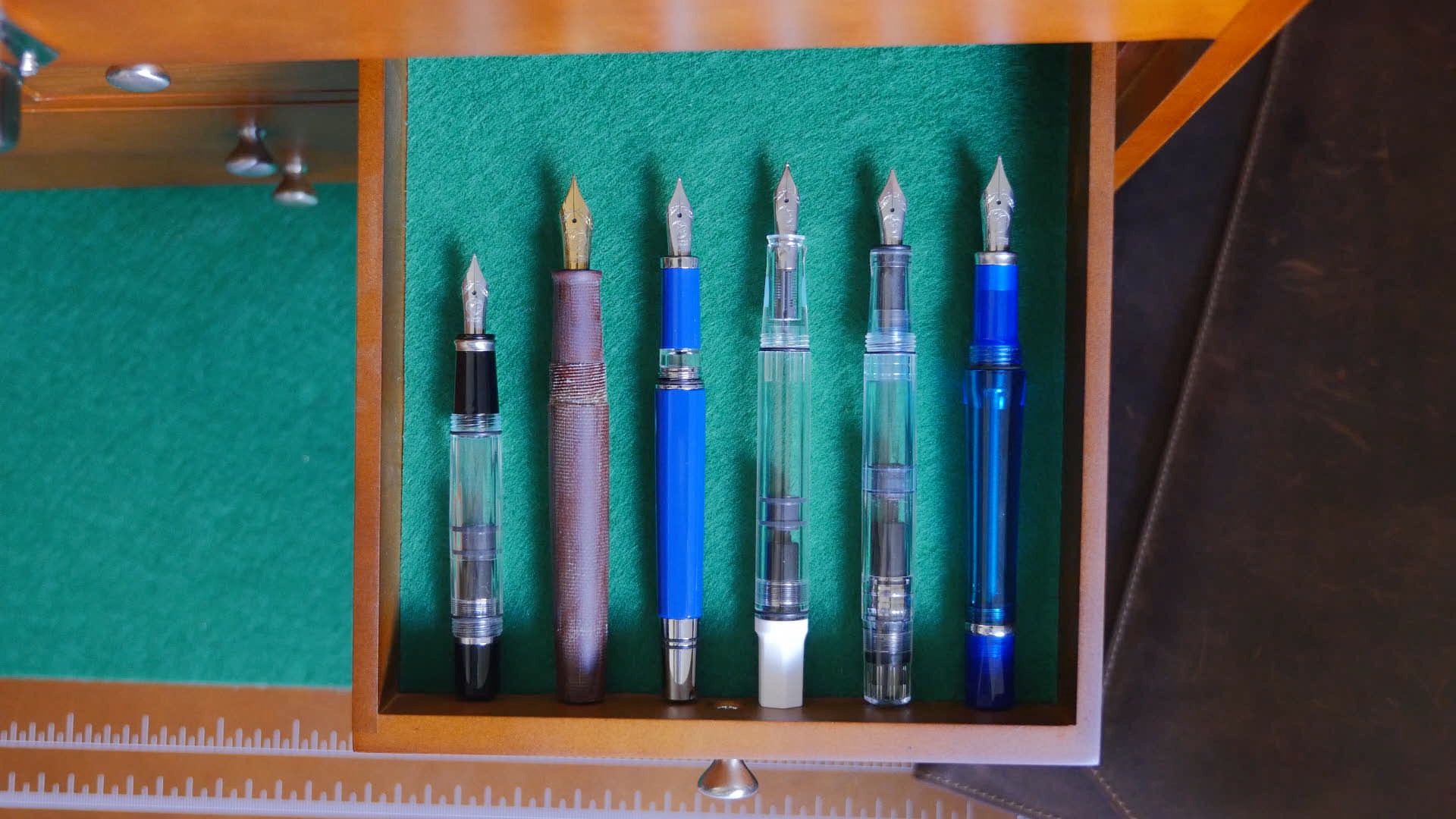
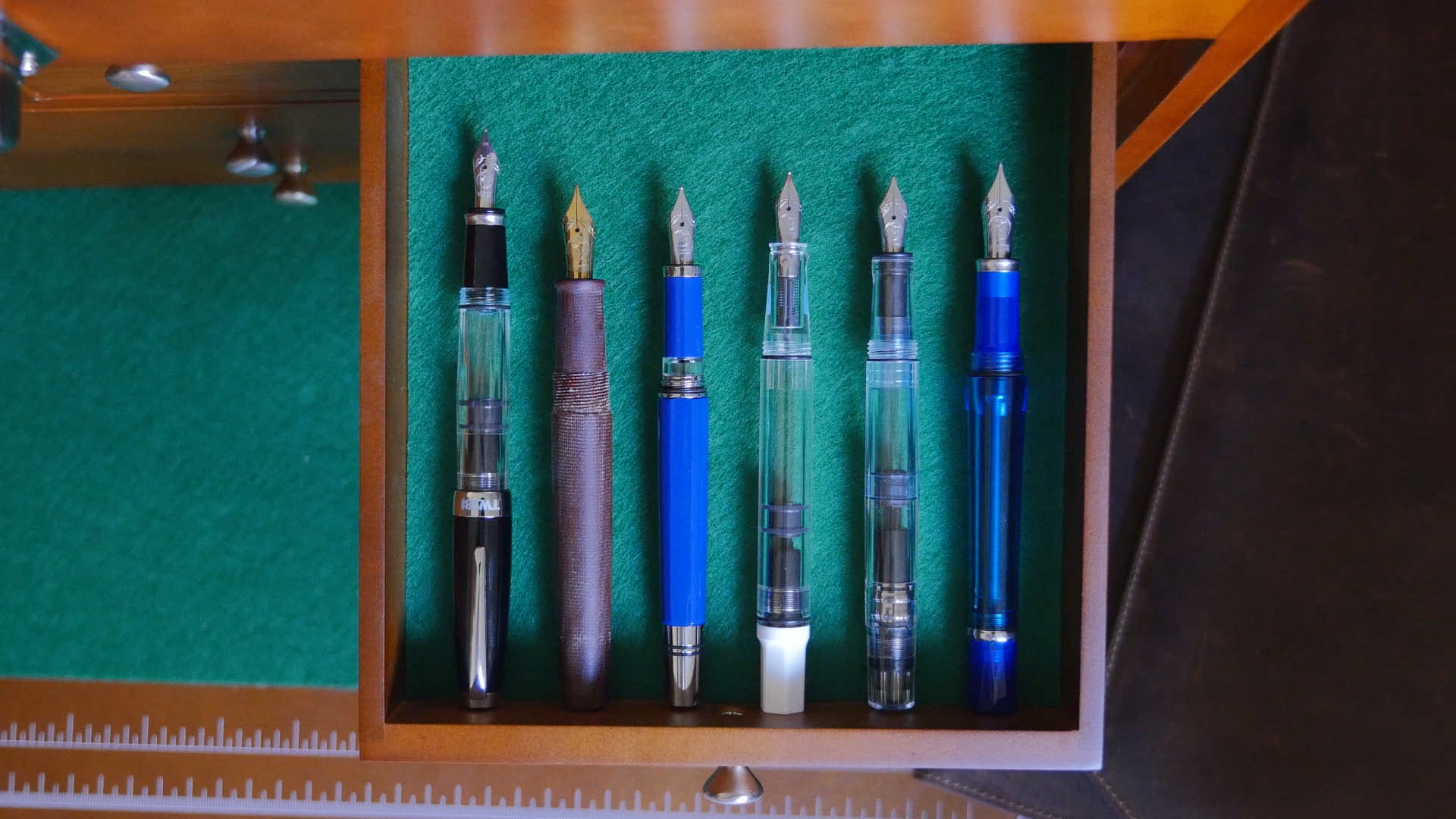
Speaking of posting, might as well see how they compare…
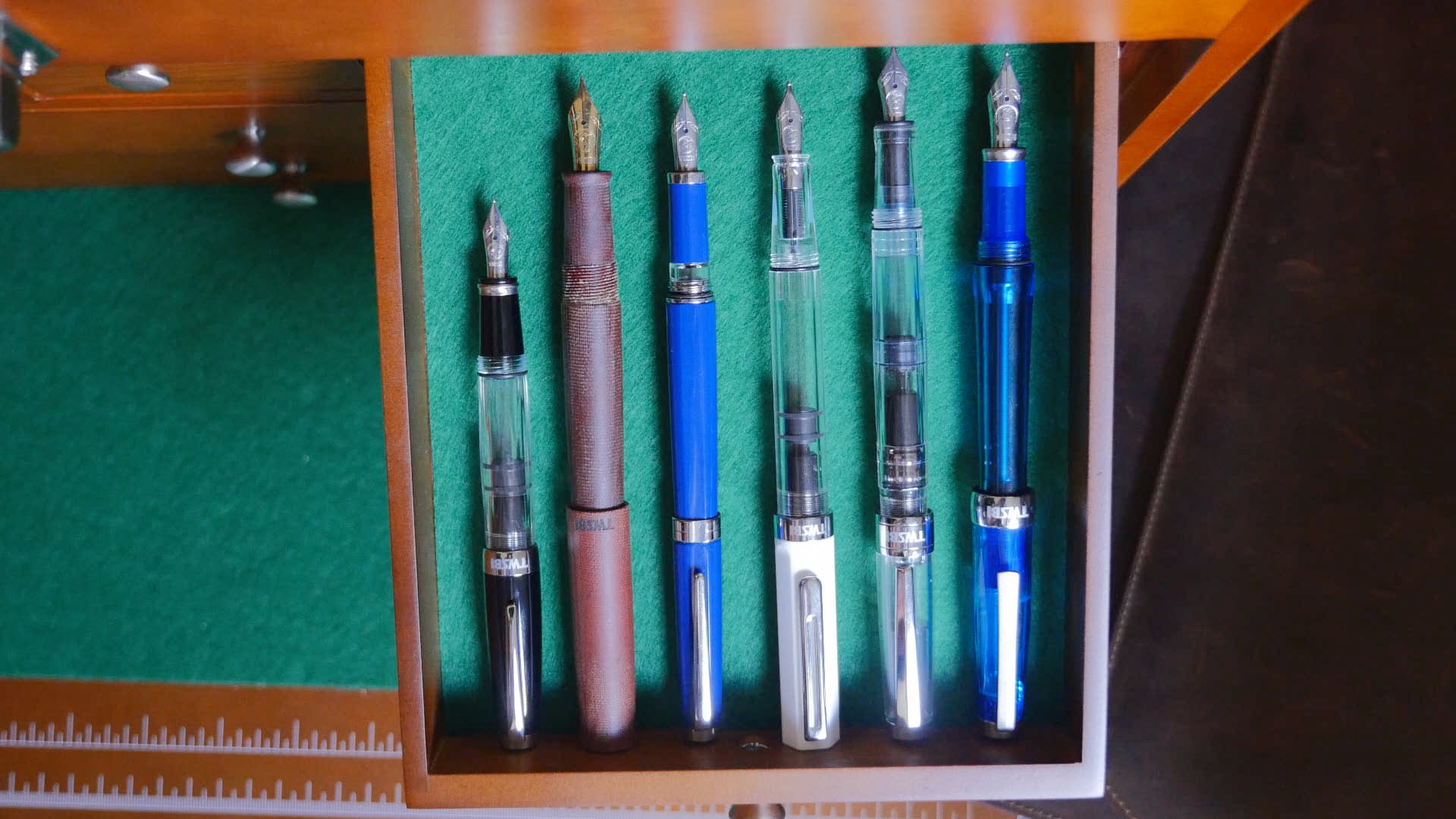
The Eco is fairly large when posted, but thanks to the cap’s light weight, it doesn’t feel nearly as unbalanced as posting the 580 or the Vac700. Honestly, I could use the Eco in either configuration. The Classic, on the other hand, I can’t use without posting. It’s just too thin and light for me otherwise.
Now, the only thing left to do is ink it up and get to writing!
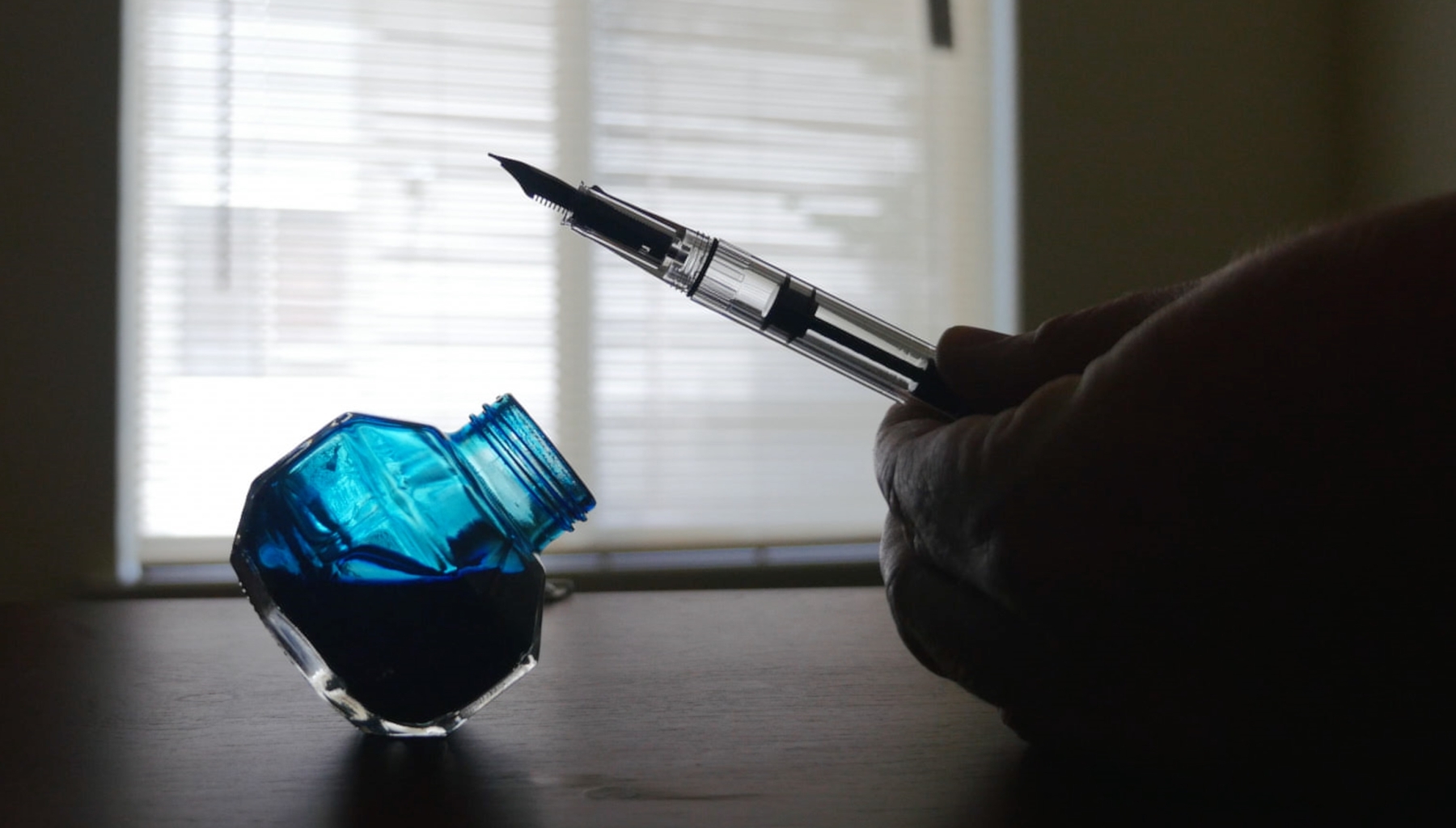
I’m going to use some Omas Turquoise for this sample as it’s one of my favorites. The ink capacity of the Eco is an impressive 1.8mL. There’s quite a large air bubble after the first fill so to get the max capacity you need to invert the pen, push the air out, and refill it. Or, if you look forward to switching colors then leave it as is and enjoy the ink sloshing around in the barrel.
I opted for the medium nib on my pen and was very impressed with its smoothness and flow. I wish every nib would come out of the box like this one. No scratchiness or roughness and just good, consistent flow. I haven’t noticed any hard starts or skipping either and while not every TWSBI, or Eco for that matter, will perform like this, it is promising to see such good results.
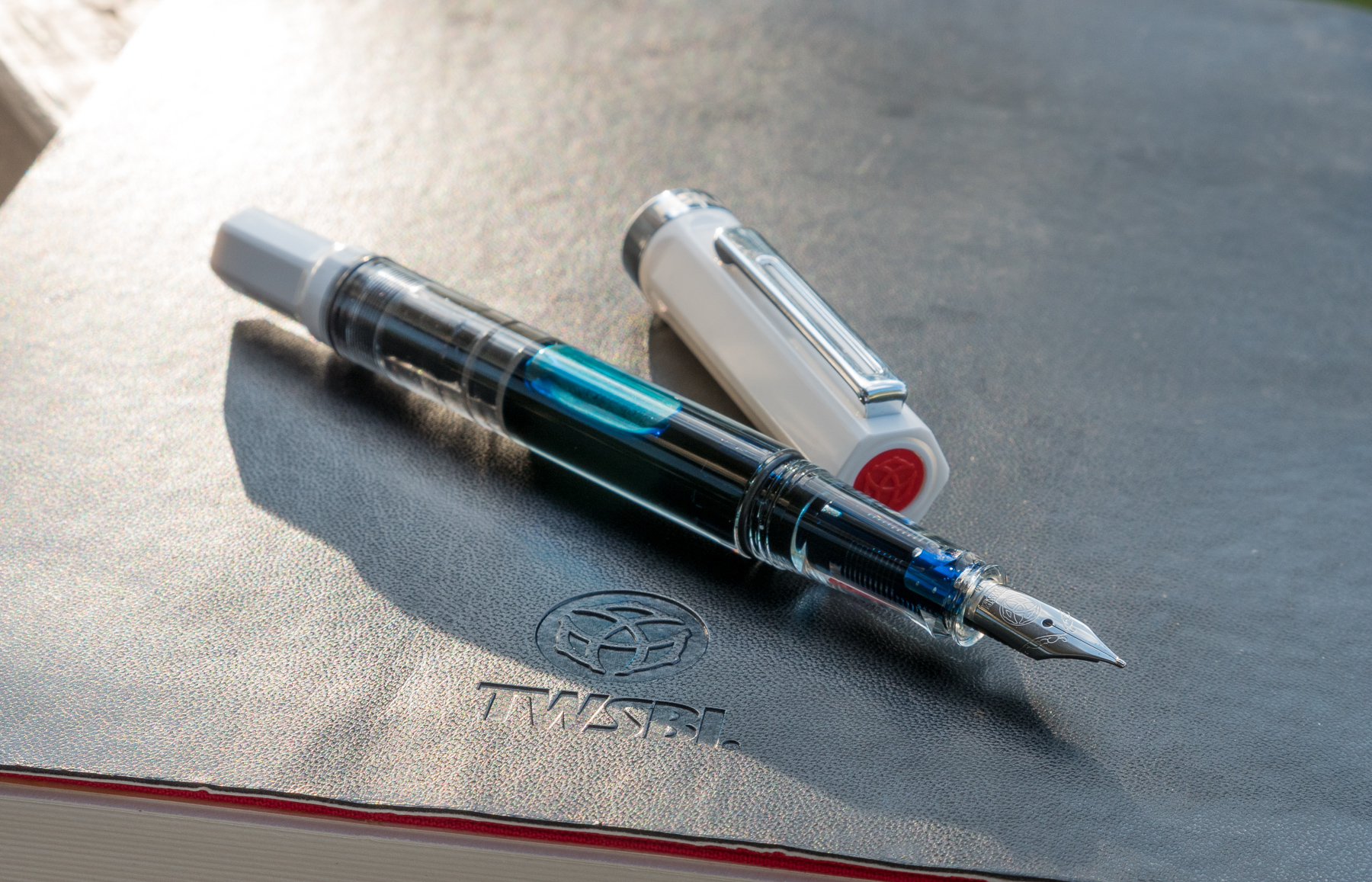
TWSBI has done an excellent job with the Eco. It’s certainly not revolutionary and I don’t think it will put that much pressure on any other manufacturers, but it is one heck of an addition to the under $30 category. I’m very pleased with the Eco’s performance. It’ll be quite some time before we can determine it’s durability, but in the mean time, it’ll join my EDC rotation and if anything changes, I’ll be sure to let you know.


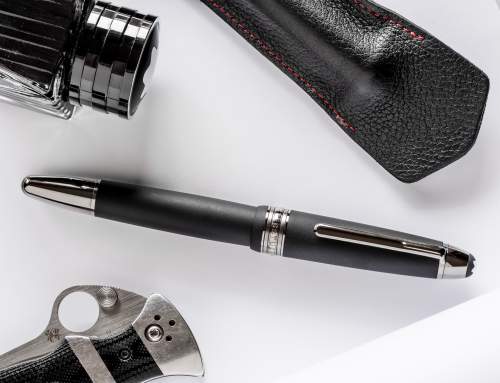
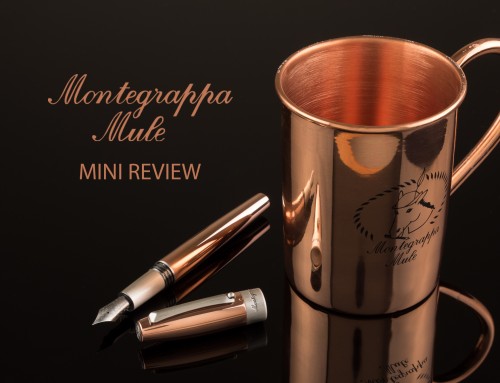
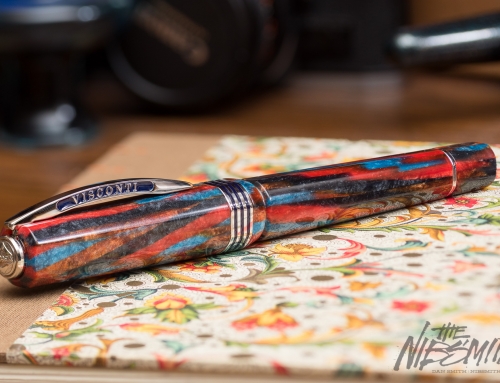
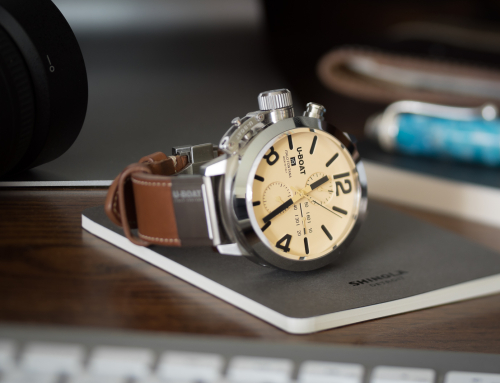
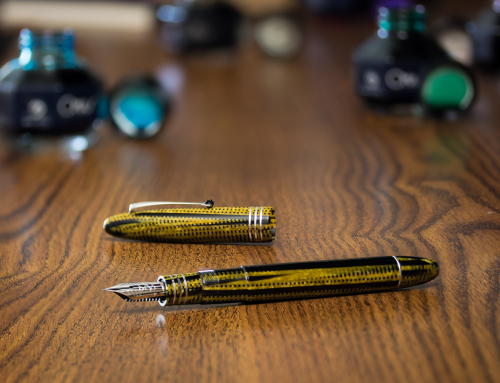
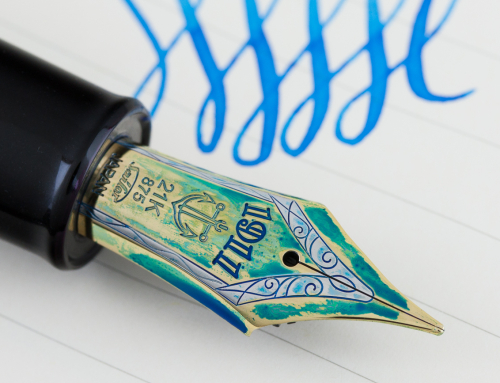

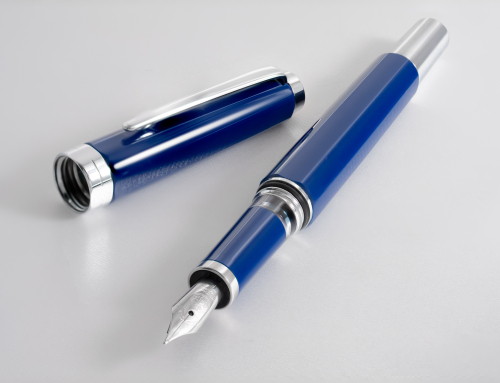
Dan,
What beautiful photography of this pen and the surroundings! Thank you for bringing beauty to the lives of your readers.
Sincerely,
Daniel Street
[…] The Nib Smith, Gourmet […]
Hey Dan,
Love all your fountain pen reviews on YouTube! Thought I’d start a conversation here on your blog instead. So, I am looking to buy my first legit fountain pen in a more affordable price range meant for every day use, that is, at least until I can comfortably work up to something like the Namiki Falcon. Which pens are a part of your EDC collection?
Richard
Hey Richard,
My EDC rotation currently consists of the Classic Pens LB5 and LB6, Omas Paragon, Montegrappa Extra 1930, Nakaya Long Piccolo, Nakaya Naka-ai, Aurora 85th Anniversary, Sailor King of Pen Ebonite, Pelikan M805 and M1000, and the Wahl-Eversharp Decoband.
Thanks for sharing your EDC. Those pens are real nice, but just slightly out of my price range. Maybe I ought to ask, which pens would you recommend in the under $30 category in addition to the Eco?
There’s not a whole lot. The Pilot Metropolitan comes to mind. Of course, there’s always the Lamy Safari, but I’ve never been able to get along with its oddly shaped grip section.
You can also try a Faber-Castell fountain pen. Basic and Loom are both great. They share the nib and, at least for me, their nib is fantastic. They are heavier than I would like, but I really like how they write.
Also they are a little more expensive than $30. They are about $40.
Thanks for the great review. I found it very insightful and appreciated the comparison to other TWSBI’s of great value as well, having a 580AL in my collection. I have some question for you, what case are you using to sort your collection for pictures?
[…] It had to be an inexpensive, because I do not live in a protected work environment. I noticed the TWSBI Eco . Secondly the price is right. Unfortunately was a little higher in Canada specially with shipping […]
Late to the party here but thanks for the review – you convinced me, I ordered an Eco with 1.1 stub – and its a seriously lovely writer, my new BFF pen
For me this TWSBI does put pressure on folks like Lamy. Why on earth would I buy a Safari Vista et al when I can get a really practical piston filler for not much more money (if you include the converter cost in UK). My Lamy Pur needs such frequent refills and the TWSBI is a nicer writer – absolute no brainer